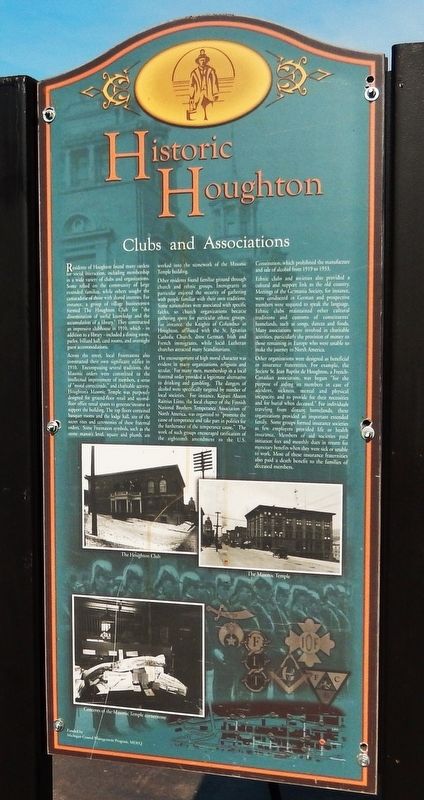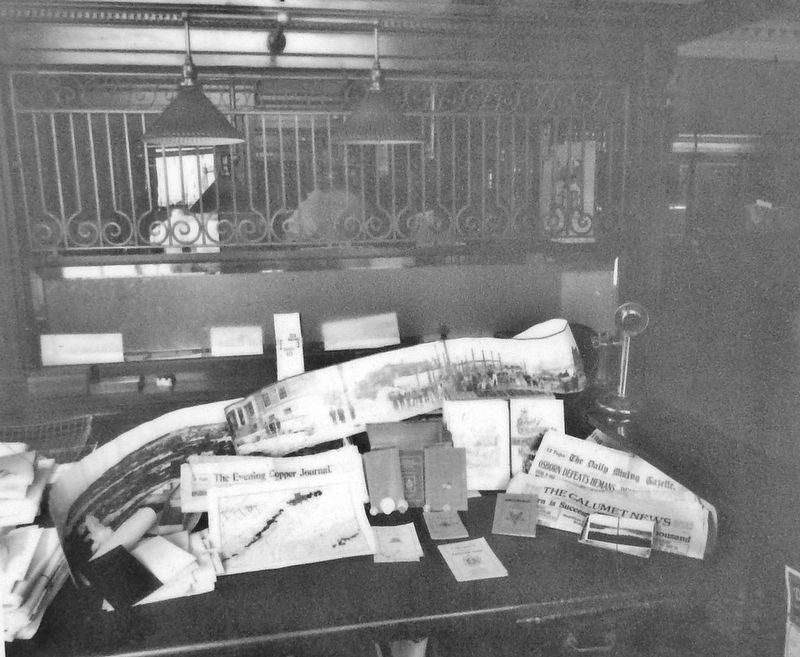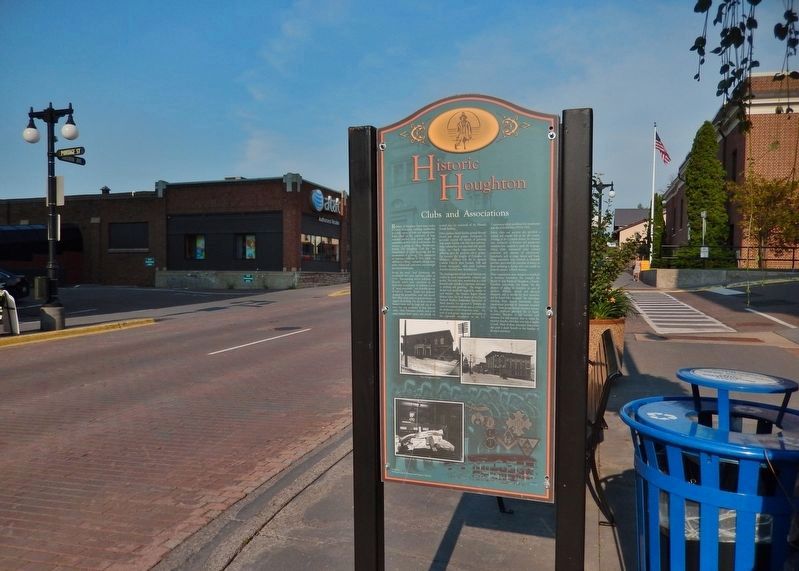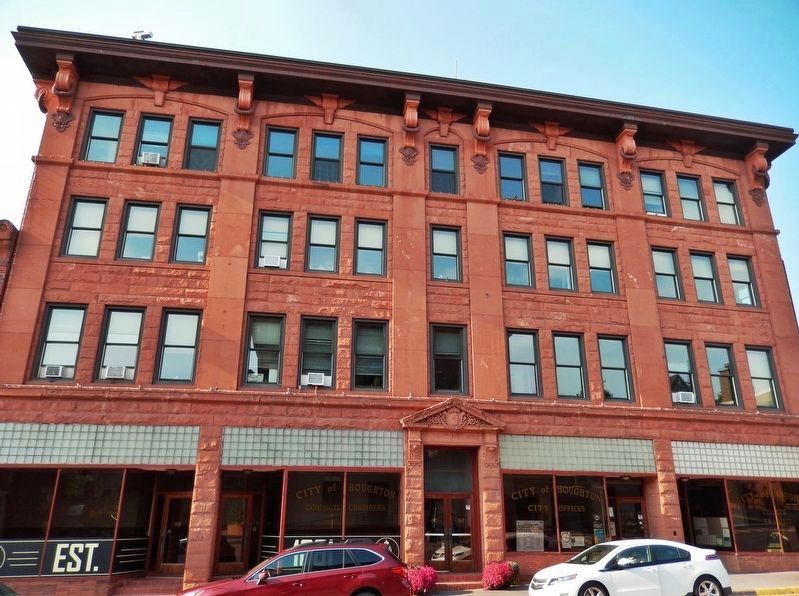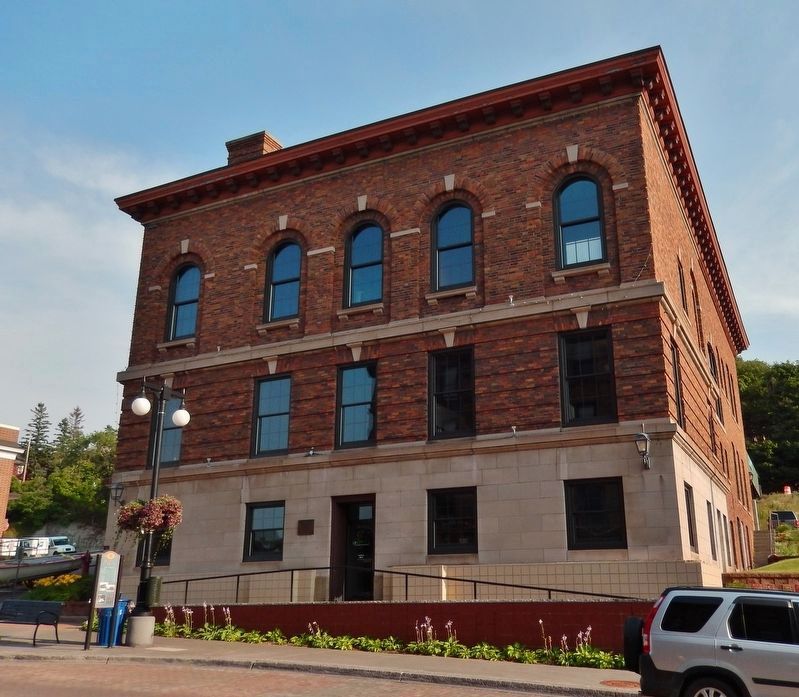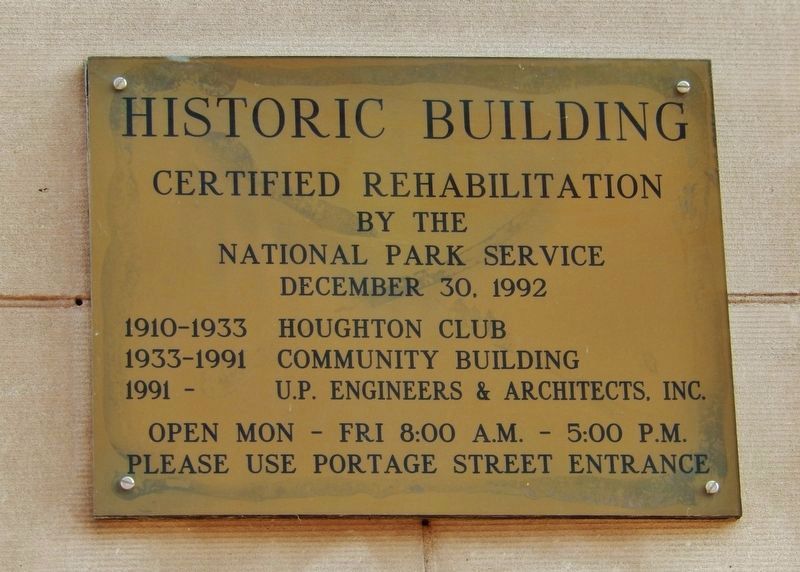Houghton in Houghton County, Michigan — The American Midwest (Great Lakes)
Clubs and Associations
Historic Houghton
Across the street, local Freemasons also constructed their own significant edifice in 1910. Encompassing several traditions, the Masonic orders were committed to the intellectual improvement of members, a sense of "moral correctitude," and charitable activity. Houghton's Masonic Temple was purposely designed for ground-floor retail and second-floor office rental spaces to generate income to support the building. The top floors contained banquet rooms and the lodge hall, site of the secret rites and ceremonies of these fraternal orders. Some Freemason symbols, such as the stone mason's level, square and plumb, are worked into the stonework of the Masonic Temple building.
Other residents found familiar ground through church and ethnic groups. Immigrants in particular enjoyed the security of gathering with people familiar with their own traditions. Some nationalities were associated with specific faiths, so church organizations became gathering spots for particular ethnic groups. For instance, the Knights of Columbus in Houghton, affiliated with the St. Ignatius Catholic Church, drew German, Irish and French immigrants, while local Lutheran churches attracted many Scandinavians.
The encouragement of high moral character was evident in many organizations, religious and secular. For many men, membership in a local fraternal order provided a legitimate alternative to drinking and gambling. The dangers of alcohol were specifically targeted by number of local societies. For instance, Kupari Alueen Raittius Liitto, the local chapter of the Finnish National Brothers Temperance Association of North America, was organized to "promote the cause of temperance and take part in politics for the furtherance of the temperance cause." The work of such groups encouraged ratification of the eighteenth amendment to the U.S. Constitution, which prohibited the manufacture and sale of alcohol from 1919 to 1933.
Ethnic clubs and societies also provided a cultural and support link to the old country. Meetings of the Germania Society, for instance, were conducted in German and prospective members were required to speak the language. Ethnic clubs maintained other cultural traditions and customs of constituents' homelands, such as songs, dances and foods. Many associations were involved in charitable activities, particularly the provision of money to those remaining in Europe who were unable to make the journey to North America.
Other organizations were designed as beneficial or insurance fraternities. For example, the Société St. Jean Baptist de Houghton, a French-Canadian association, was begun "for the purpose of aiding its members in case of accident, sickness, mental and physical incapacity, and to provide for their necessities and for burial when deceased." For individuals traveling from distant homelands, these organizations provided an important extended family. Some groups formed insurance societies as few employers provided life or health insurance. Members of aid societies paid initiation fees and monthly dues in return for monetary benefits when they were sick or unable to work. Most of these insurance fraternities also paid a death benefit to the families of deceased members.
Erected by Michigan Coastal Management Program, MDEQ.
Topics. This historical marker is listed in these topic lists: Charity & Public Work • Churches & Religion • Fraternal or Sororal Organizations • Settlements & Settlers. A significant historical year for this entry is 1910.
Location.
47° 7.307′ N, 88° 33.956′ W. Marker is in Houghton, Michigan, in Houghton County. Marker is at the intersection of Shelden Avenue (U.S. 41) and Portage Street, on the left when traveling west on Shelden Avenue. Marker is located along the sidewalk, near the southwest corner of the intersection, directly in front of the former Houghton Club building. Touch for map. Marker is at or near this postal address: 100 Portage Street, Houghton MI 49931, United States of America. Touch for directions.
Other nearby markers. At least 8 other markers are within walking distance of this marker. Hotels and Saloons (within shouting distance of this marker); Historic Houghton (about 300 feet away, measured in a direct line); a different marker also named Historic Houghton (about 300 feet away); The Amphidrome / The Birth of Professional Hockey (about 300 feet away); Grace Methodist Church (about 400 feet away); Municipal and Cultural Activities (about 500 feet away); Trinity Episcopal Church (approx. ¼ mile away); Growth and Change (approx. 0.3 miles away). Touch for a list and map of all markers in Houghton.
Related markers. Click here for a list of markers that are related to this marker. Historic Houghton Walking Tour
Also see . . . Houghton County History. Houghton County residents comprised one of the most ethnically diverse communities in the United States as the Federal Census of 1870 noted that 57% of
the County's residents were foreign born, the third highest rate in the Country. At that time, fewer than 5% of the County's residents had American born parents. In 1900, Houghton County had the largest Chinese, Italian, Finnish, Slovenian and Croatian communities in Michigan. (Submitted on August 2, 2020, by Cosmos Mariner of Cape Canaveral, Florida.)
Credits. This page was last revised on July 20, 2022. It was originally submitted on July 30, 2020, by Cosmos Mariner of Cape Canaveral, Florida. This page has been viewed 128 times since then and 9 times this year. Photos: 1. submitted on August 1, 2020, by Cosmos Mariner of Cape Canaveral, Florida. 2, 3, 4, 5, 6. submitted on August 2, 2020, by Cosmos Mariner of Cape Canaveral, Florida.
